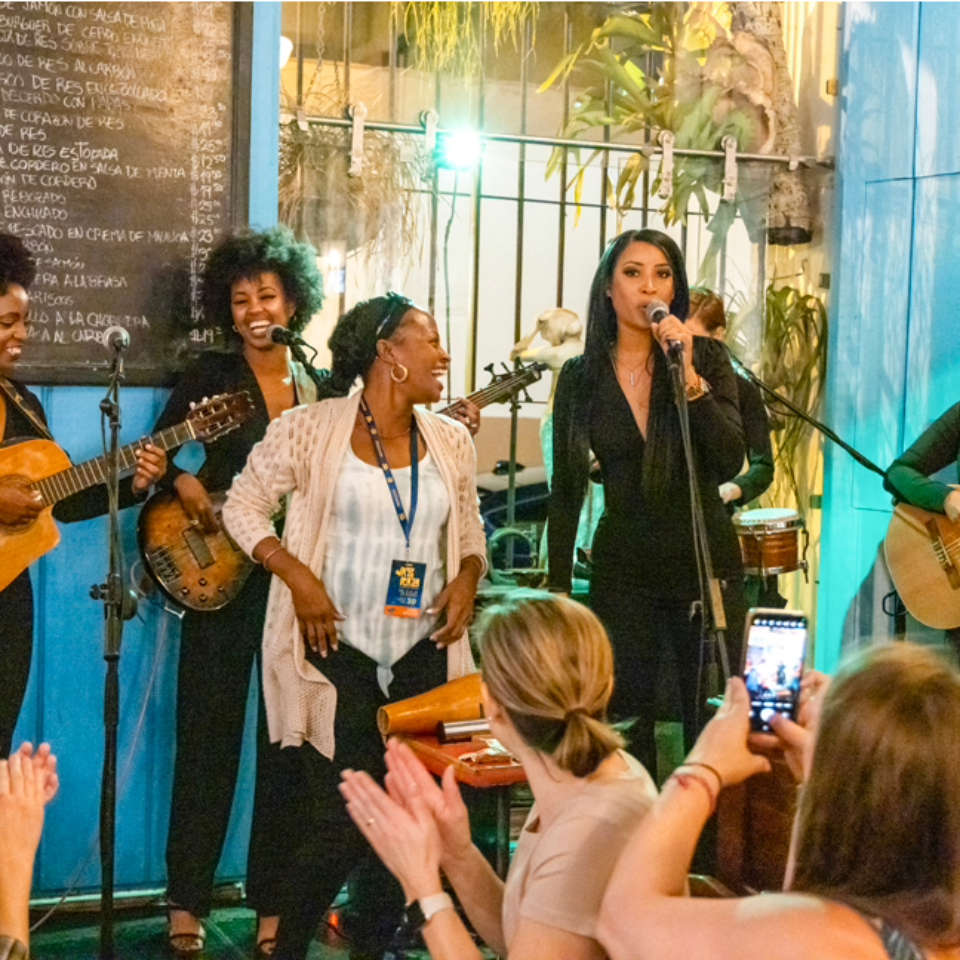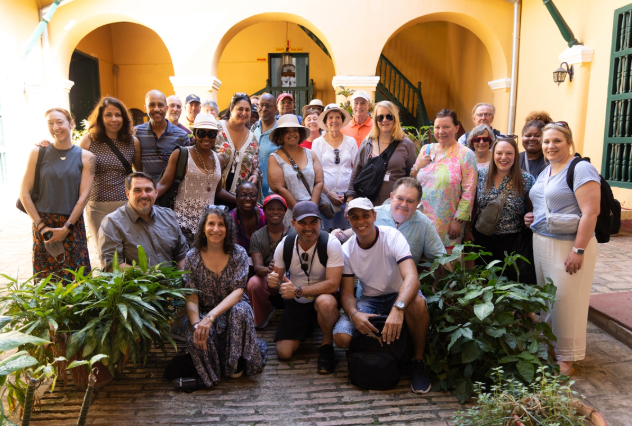
Connecting Charlotte to Cuba
JazzArts Charlotte celebrates 15 years with a Cuban adventure
By Krisha Chachra | Photos by Jeff Cravotta, courtesy of JazzArts Charlotte
The relationship between the United States and Cuba is complicated. Despite the tumultuous history between the two countries, it is undeniable that the Caribbean island shares a love for something made in the U.S.: jazz music. That’s one reason JazzArts Charlotte decided to kick off its 15th-anniversary celebration with a trip to Cuba. The Charlotte-based nonprofit — offering educational programs, live performances and musician support — arranged a delegation of 35 supporters to visit Cuba for the 39th annual Havana Jazz Festival.
“The work we’re doing at JazzArts to support future musicians and artists is tied to not only learning to play the music but learning the history behind the music,” says Lonnie Davis, founder of JazzArts. “When we learn from talented musicians in a country like Cuba that has deep roots in jazz, we pull from that energy and inspire the future jazz musicians in our own community.”
Partnering with tour operator Cross Cultural Journeys and owner Cilla Utne, who has visited Cuba 23 times, Davis and her team arranged the nine-day journey through Havana, Matanzas, Trinidad and Cienfuegos under a visa that the U.S. government issues to support the Cuban people.

South Charlotte resident and JazzArts patron Shaunese Singleton participated. “My father introduced me to jazz music at a young age with the Buena Vista Social Club. He has since passed, so this trip was a way to remember him and his love for Latin jazz,” she says.
Jazz was born in New Orleans but has links to Cuba. In the 1800s, enslaved people from many African nations and free people of color congregated in New Orleans’ Congo Square (now within Armstrong Park) to play the drums and dance. Davis, originally from New Orleans, says that Santiago, Cuba, was once a sister city to her hometown, and a daily ferry would run between ports. The musical influences from both cities and the cultural exchanges in Congo Square led to many of the rhythms we now hear in jazz.
Culture and Crumbles
Known for its rum, cigars and 1950s-style cars still driven throughout the island, Cuba was a cornerstone of the Spanish Empire, and Havana was the key port for the sugar trade through the Caribbean. Eventually, under the leadership of poet José Martí, Cuba gained independence from Spain, and a few decades later the trendy city of Havana caught the eye of the U.S. mob.
The dream of creating the “next Las Vegas” in the Caribbean ended when Fidel Castro came to power in 1959. What once was a pulsing city of classical architecture and beautiful buildings is now crumbling within one generation.

